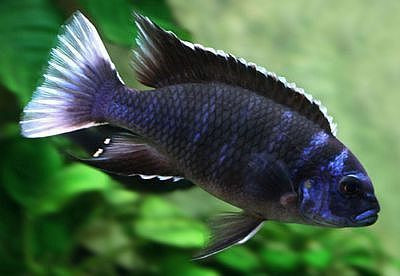 Loading... Please wait...
Loading... Please wait...- Home
- Freshwater Fish
- Lake Malawi -Cichlids
- White Tail Acei (Pseudotropheus acei “ngara”) 6cm
White Tail Acei (Pseudotropheus acei “ngara”) 6cm
Product Description
Acei like most mbunas have a very long intestine so they can live off a few bites of algae a day. These fish are at high risk for Malawi bloat. Bloat is caused by a protozoan that multiplies when a fish is under stress or consuming an improper diet. The protozoans multiply enough that they cause blockages in the intestines, so neither food nor gases can pass, causing them to become bloated. The bloat eventually damages their liver, swim bladder, and kidneys so much that they die in 24–78 hours. Acei have bicuspid teeth like the rest of the Pseudotropheus genus.
Pseudotropheus sp. “acei” (also known as yellow-tail acei) is a Mbuna cichlid from Lake Malawi that grows to around 7 in (18 cm) in length. Although known for many years, it has not been formally described. There are two different varieties: The most common yellow-tailed Pseudotropheus sp. “acei” (Msuli), and the white-tailed Pseudotropheus sp. “acei” (Ngara). Like most Mbuna, it dwells in shallower waters, however it will sometimes go near the surface, which is very uncommon for Mbunas. It is a very common fish for fish-keepers. It gets its common name from its blue body and yellow tail. Originally discovered in 1922 by Regan, the acei was originally believe to be a Pseudotropheus, but was later changed to Gephyrochromis and then back again. It prefers the sandy and rock filled shoreline where sunken logs are easily accessed. This species has developed the advantage of being able to harvest algae from submerged logs and roots. They are equipped with typical Gephyrochromid cuspid-like teeth that are flat for removing epixlyic or epilithic algae from wood. In the lake, schools of 30-50 individuals surrounding a large log are not uncommon, however in the rocky areas; schools usually consist of 3-10 individuals



